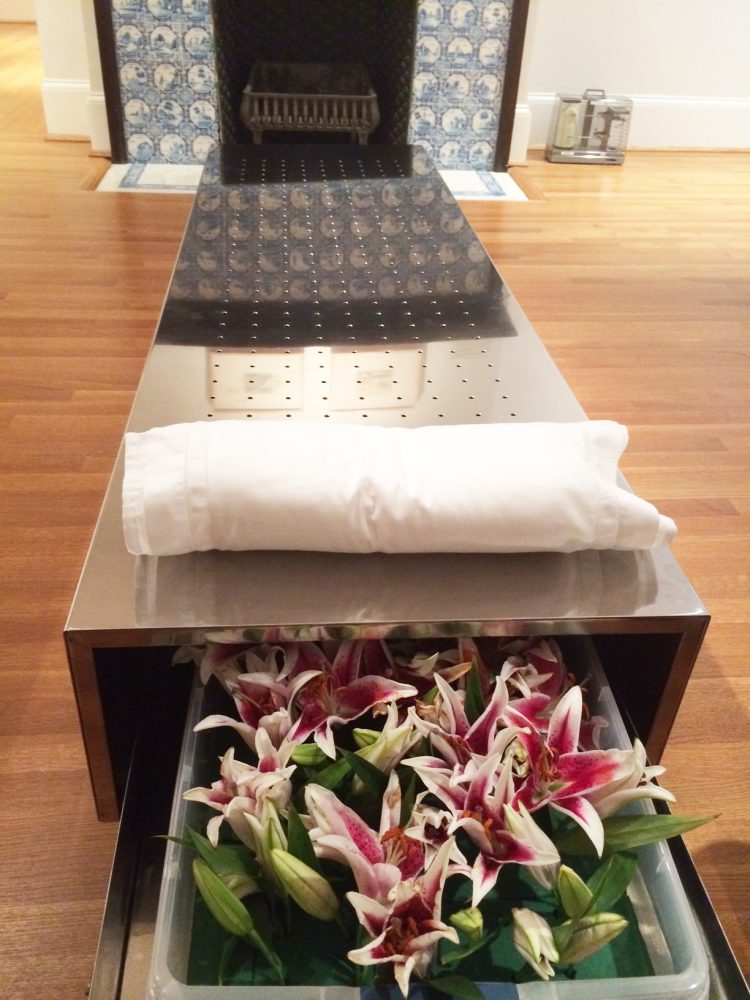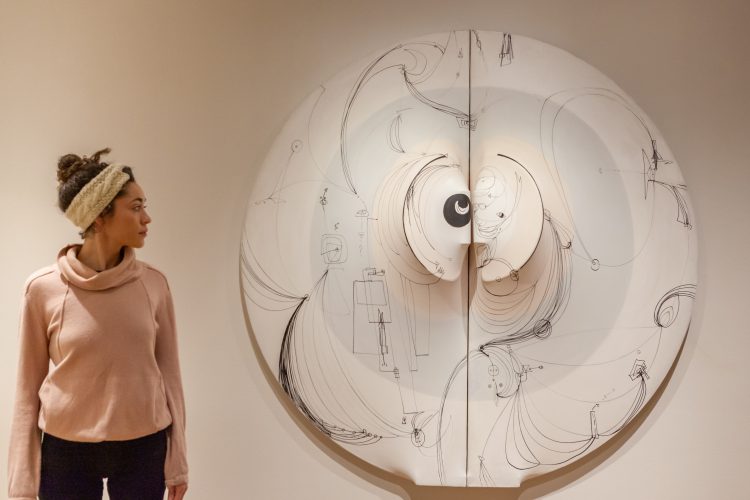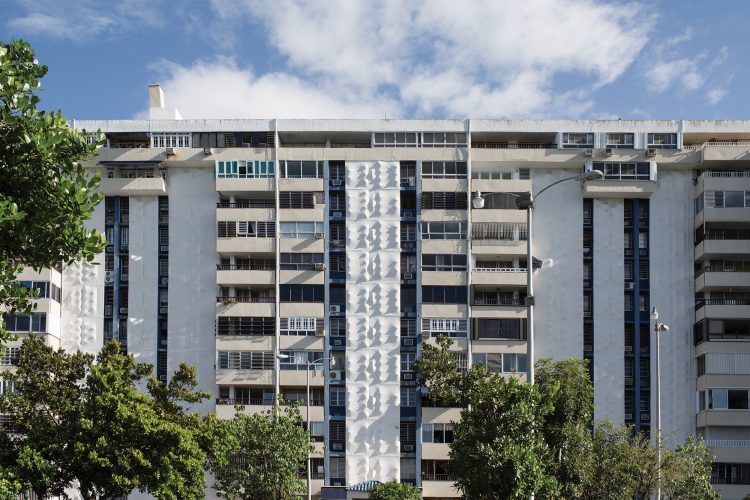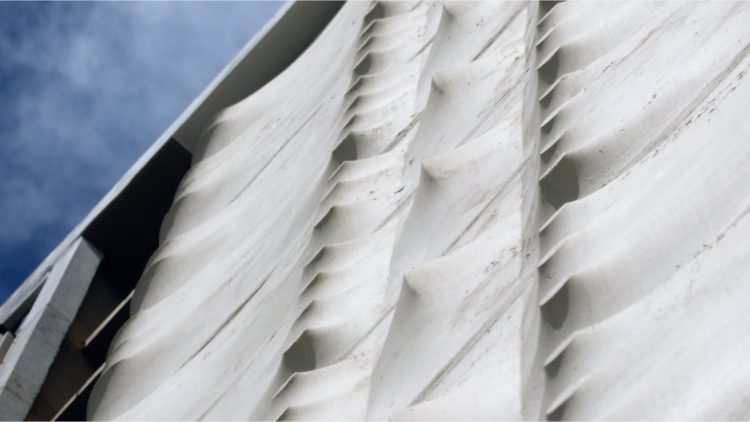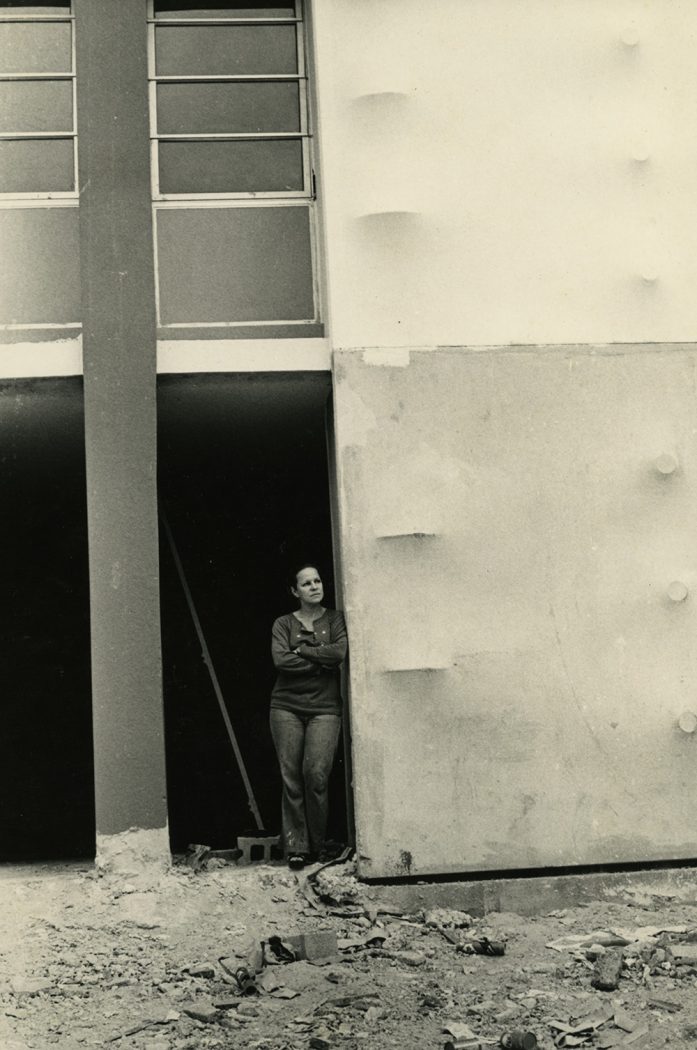To commemorate Women’s History Month, The Phillips Collection will be celebrating female and female identifying artists during the entire month of March.

Valeska Soares, Fainting Couch, 2002; Stainless steel, flowers, and textile, 78 3/4 x 23 1/2 x 13 3/4 in., The Phillips Collection, Gift from the Heather and Tony Podesta Collection, Washington, DC, 2012
Valeska Soares (b. 1957, Belo Horizonte, Brazil) is a Brooklyn-based Brazilian sculptor and installation artist. Her work varies with a wide range of materials, such as stainless steel and mirrors, antique books and furniture, chiseled marble, bottles of perfume, and fresh roses and lilies. Most of her experiences stem from her training in architecture as well as minimalism and conceptualism. Her works invite viewers to engage all five senses, evoking the poetic and elusive themes of desire, intimacy, language, loss, personal memory, and collective history. Her conceptual techniques are used to create environments and experiences that are inviting yet disturbing. Some of her works were inspired by her favorite novelist Italo Calvino.
Soares’s Fainting Couch in the Phillips’s collection is a multisensory work that invites visitors to repose on a stainless steel chaise as they take in the heady olfactory notes of real stargazer lilies—60 to 80 blooms in all—which are stored in drawers built underneath the metal seating. In order to maintain the pleasant aroma, the lilies must be replaced on a weekly basis.
Soares first achieved international recognition with her participation in the 1995 edition of SITE Santa Fe, shortly after she moved to New York from Brazil. Her works have been exhibited at the Jewish Museum in New York; the Museum of Fine Arts in Boston; the Sharjah Biennial in the UAE, and more.

